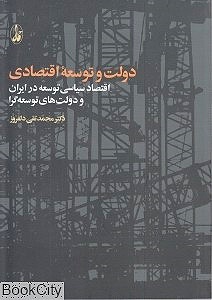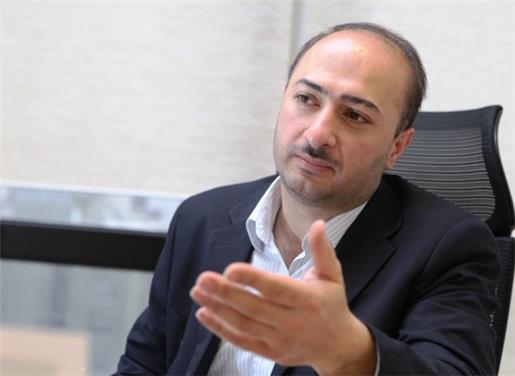
On October 14, Alef, a news website, pitched a book entitled Government and Economic Development by Dr. Mohammad Taghi Delforooz which has been recently published by Agah Press. What appears next is the translation of a review by Dr. Ali Sarzaim of the book and the reasons as to why it is a good read:
The Iranian intellectual community has held the viewpoint that there have always been some elites seeking the country’s development, but the political system has erected barriers in their way.
The Sociology of Elite-killing*, a once blockbusting book by Ali Rezagholi, was written from this perspective. The concept of slow development in Iran is far more complicated and cannot be dissected merely on the basis of a single factor. Different periods of Iranian history have dealt with different phenomena. Therefore, each stage has its own distinctive analysis and one general explanation cannot apply to all stages.
For instance, during some periods of Iranian history, many reformist intellectuals tried to gird up their loins and be part of the ruling system to exploit its power, rather than distancing themselves from the governing system and just adopting a critical approach toward it.
That move was designed to have the state of affairs in the country reformed.
Contrary to popular belief that the government has always been an impediment to development, it can be suggested that at some stages during pre-and post-revolution eras, there were some governments which paid special attention to development and struggled to turn the government into a driving force behind development, prompting other sectors contributing to economic growth to follow in the footsteps of the government in its march toward development.
At times, such measures turned out to be effective and brought about high growth for a short period of time and consequently helped establish the foundations of modern governments and institutions in the country to the extent that today Iran is classified as a country with moderate per capita income. That we expect more is quite natural, though.
Iran is among a handful of countries which accepted Constitutionalism ahead of other developing nations and accordingly founded modern institutions. In practice, nonetheless, such moves have not proved adequate and sustainable enough to help Iran catch up with developed countries. The question that arises here is that which one of the different governments which have risen to power in contemporary Iranian history can be regarded as a development-oriented government. The second question that follows is that why such governments acted hastily and the trend that they set did not last long; why did they fail in practice?
The recent experience of some developing nations suggests that their governments have played an important role in leading the economy and society at large toward development, whereas according to the common Western model, it is the market and the developments within it that move a society in the direction of development.
During a long process that lasted a few hundred years, Western countries have secured development and welfare. In getting where they are, they have been dependent on measures taken by private institutions and on the market economy.
However, many developing countries have contended that they cannot wait for such a long time to foster development. The private sector in such countries is fragile and cannot stimulate development within a short and reasonable period of time. That’s why governments in such countries took action and played a pioneering role in moving toward development. In other words, the leaders who sought development used power and state facilities to jump-start the economy.
The interesting point about such governments is that the political system in most of those countries is non-democratic, but the nature of a system as such has helped those in authority ensure coordination between different sectors, rather than prompt them to feel freer to exert more pressure on people and plunder more public funds.
However, many developed countries which were in better conditions in terms of democracy, couldn’t make development-related decisions and failed to ensure the required coordination. The non-democratic nature of such systems has resulted in the relative independence of the government from the public and civil society. Instead of acting as a hindrance to development, it has offered an opportunity for those who make economic policies to be immune from the pressure exerted by influential figures.
The oppressive nature of these governments has stopped social and public resistance to change from surfacing; therefore, it has facilitated economic reforms. Altogether, these characteristics have been seen in so many development-oriented governments which make the study into this phenomenon interesting and can offer us an insight into the lack of development in Iran.
Government and Economic Development is designed to get readers familiar with the development-oriented governments and their pioneering role in pushing society toward development. In one chapter, the author has discussed four special examples, including South Korea, Taiwan, Singapore and Malaysia.
Dr. Delforooz, the writer, has tried to extract qualities of development-oriented governments through this comparative study. Among other things, the role of the elite, the independence of the government from influential figures and its extent, the relation between the government with the working class, feudalists, serfs and capitalists, the extent of bureaucracy, the interaction of the government with civil society and the international community are the points taken into consideration. These characteristics have set a standard that helps identify development-oriented Iranian governments.
Drawing an analogy between the development-oriented governments and Iranian governments can pave the way for answering questions as to why Iranian development-oriented governments unlike their successful Asian peers, failed to land Iran in the territory of development.
Also, this book offers readers a theoretical framework by which they can take another look at the link between democracy and economic growth. Instead of considering that there is always a direct and ideal relation between the two factors, they should try to realize the complexity of the relation and analyze different factual evidence.
This book is recommended to those who are interested in development in general, and Iran’s development in particular.
*The Sociology of Elite-killing is a book by Ali Rezagholi about the performance of the political elites and how Iranian society treated them. In the domain of political studies in 1998, it turned out to be a bestseller in Iran. The book offers a sociological analysis about the historical roots of dictatorship and backwardness in Iran.
The book was first published by Ney Press in 1998. It has since been reprinted several times. Throughout the book, the author is in quest of finding an answer to the question as to whether reforms in the structure of society are introduced by the elite or that they are brought about by social developments.
To that end, the writer tries to dissect the political, social and cultural conditions of different times when some political elites were in power. Based on historical evidence, he concludes that the political, economic and social structure of Iranian society won’t let the elite revamp the state of affairs, because the community can’t stand reforms and consequently kills the elite.
